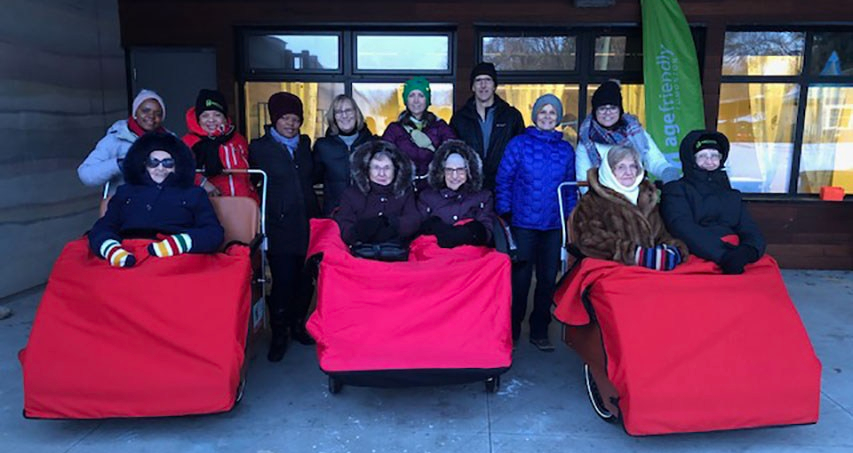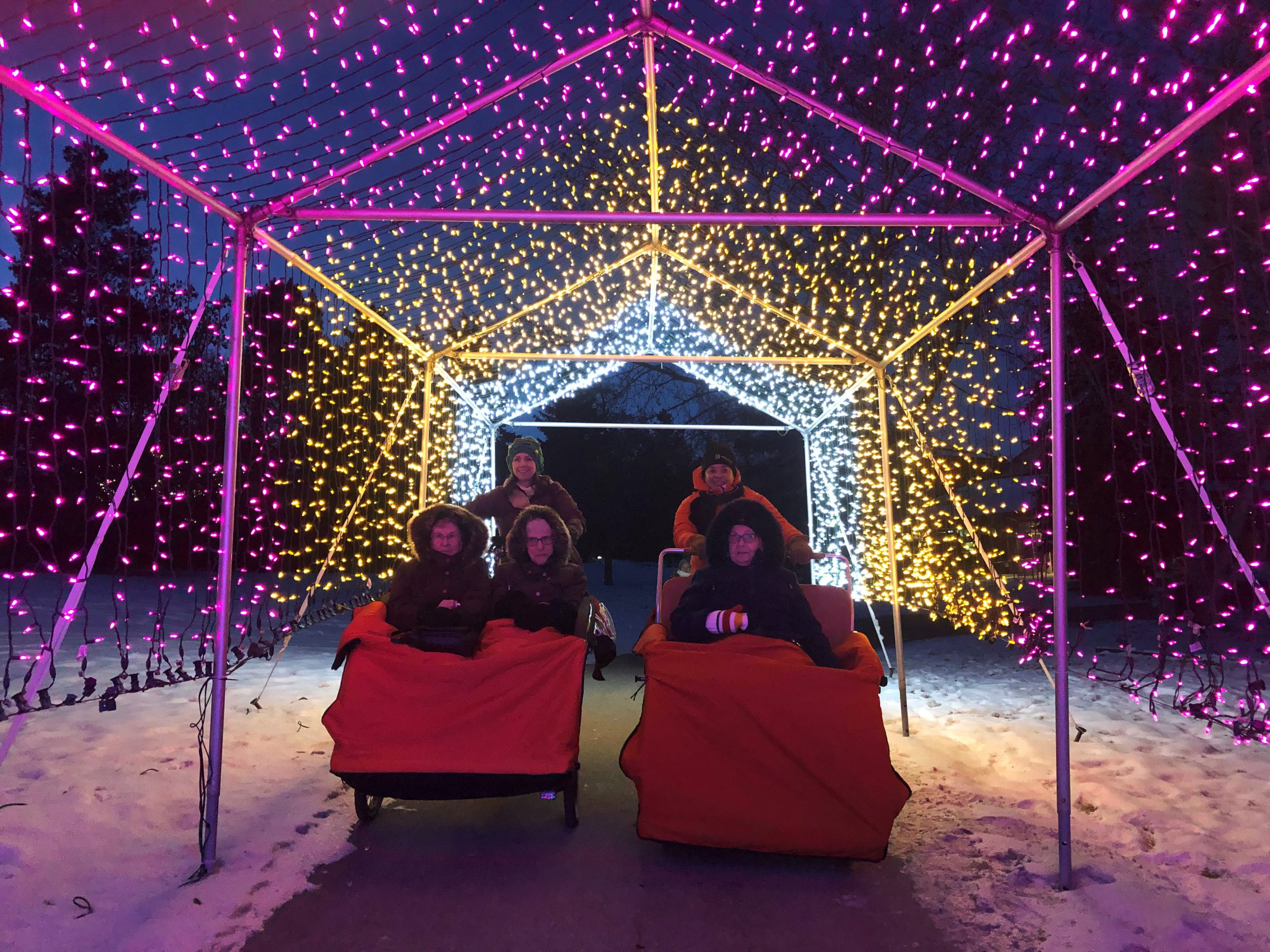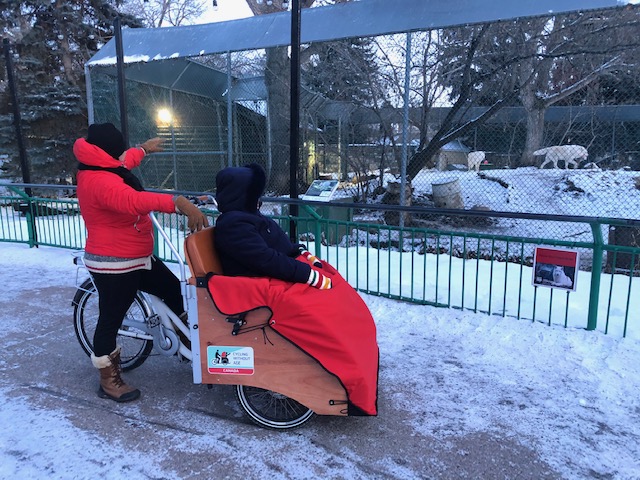Tag: volunteer

On Sunday, December 1, some of our GEF Seniors Housing residents took in the beautiful sights of Zoominescence at the Edmonton Valley Zoo through a different lens – on a Trishaw bicycle.
Zoominescence is a spectacular exhibition of artistic light installations within the Zoo grounds, and GEF partnered with Age-Friendly Edmonton to bring in our own Trishaw, a specialized three-wheel bike piloted by a trained volunteer, that gives older adults the experience of “wind in their hair” without having to drive a bike themselves.

Cycling Without Age Beaumont brought in two additional trishaws and volunteer pilots and made sure all three trishaws were mechanically ready for winter, including installing studded tires.
One attendee, who was chauffeured to the event by our community partners at Drive Happiness, said when she arrived at the zoo that she wasn’t sure what she had signed up for. At the end of the tour, she shared that she had a marvelous time. She hadn’t been back to the Edmonton Valley Zoo since her children were young and told the organizers she was so glad she came out.

“I’m very grateful that GEF Seniors Housing and its staff support the Cycling Without Age Edmonton program and promoted this opportunity to enrich seniors’ lives,” said GEF Board Vice-Chair Jacquie Eales, who also took the beautiful photos featured in this article.

Are you – or do you know – a senior who would love to take a ride in a Trishaw during Zoominescence 2019? Trishaw rides are only being offered between 4-5 p.m. on December 15 and 22. Spots are very limited, and you can email Jacquie Eales to reserve your ride time at jeales@telus.net.
For more information on Zoominescence itself, including tickets, visit the Eventbrite page. Ticket prices range from $6 – $30. Zoominescence 2019 runs every Friday, Saturday, and Sunday evening in December, from 5-9 p.m., until Sunday, December 29, 2019.
